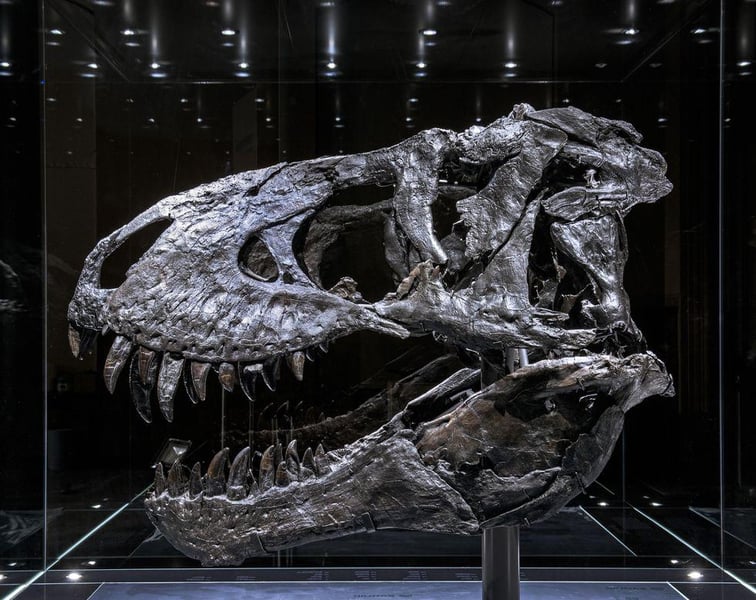If you are having trouble with our mobile app, you must remove and reinstall the app on your device.
Updating the app alone will not fix the issue. Your login will not be impacted. We sincerely apologize for this inconvenience.
Market Pharmacy is now G&G Pharmacy, conveniently located in Marketplace Foods on the corner of Hwy 2 & Broadway!
Same great staff and same great care!
Manténgase sano!

- Robert Preidt
- Posted December 1, 2021
Even T. Rex Had Bone Trouble
They once ruled the planet, but even the mighty Tyrannosaurus rex could suffer from bone disease, new research shows.
Scientists used imaging to examine the lower left jaw of a fossilized T. rex skeleton discovered in Montana in 2010. The skeleton, which is about 68 million years old and one of the most complete skeletons of the carnivorous dinosaur ever found, is at the Museum für Naturkunde Berlin in Germany.
"While this is a proof-of-concept study, noninvasive DECT imaging that provides structural and molecular information on unique fossil objects has the potential to address an unmet need in paleontology, avoiding defragmentation or destruction," said Dr. Charlie Hamm, a radiologist at Charité University Hospital in Berlin, who led the study.
Hamm's team did a visual inspection and used noninvasive dual-energy computed tomography (DECT) to examine the skeleton. DECT uses X-rays at two different energy levels to provide information about tissue composition and disease processes that can't be obtained with single-energy CT scan.
The research team found thickening and a mass on the jaw's surface that extended to the root of one tooth. DECT detected a significant build-up of the element fluorine in the mass, which is associated with areas of decreased bone density.
The mass and fluorine accumulation support the diagnosis that the T. rex had a bone infection called tumefactive osteomyelitis, according to the researchers.
The team presented their findings Wednesday in Chicago at the annual meeting of the Radiological Society of North America (RSNA). Research presented at meetings should be considered preliminary until published in a peer-reviewed journal.
Oliver Hampe, senior scientist and vertebrate paleontologist at Museum für Naturkunde Berlin, said the DECT approach has promise in other paleontological applications, including determining age and differentiating actual bone from replicas.
"The experimental design, including the use of a clinical CT scanner, will allow for broad applications," Hampe added in an RSNA news release.
More information
The U.S. National Library of Medicine has more on bone infections.
SOURCE: Radiological Society of North America, news release, Dec. 1, 2021







